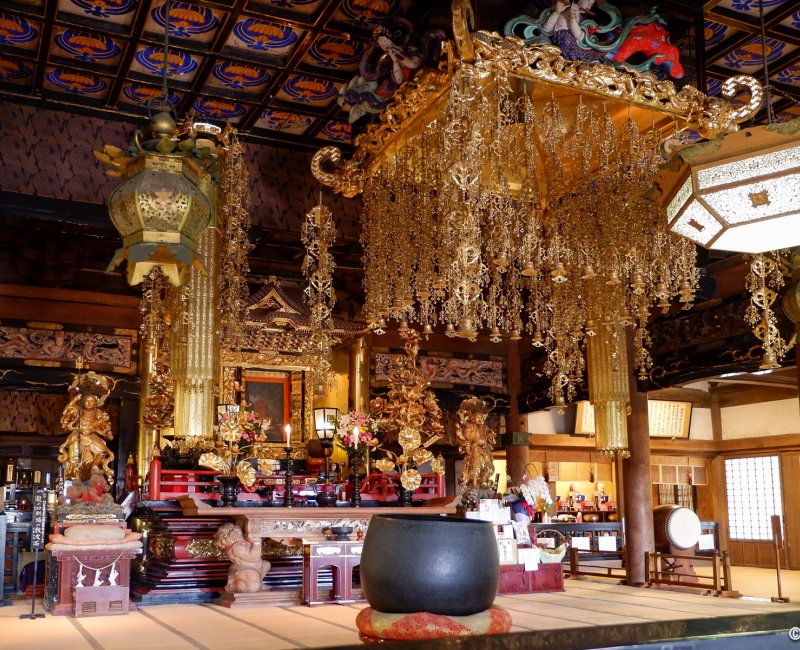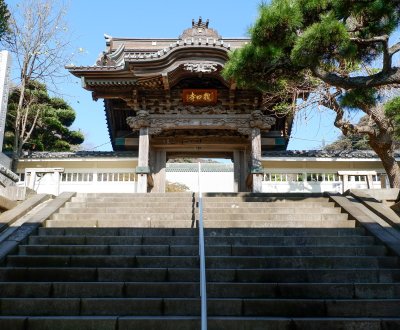Ryuko-ji
The Temple of Nichiren’s Miracle
Ryuko-ji is a Buddhist temple of the Nichiren sect, on the heights of Fujisawa in Kanagawa prefecture, located only a mile away from Enoshima Island. This historical place reveals a tumultuous and legendary past. It sits on a mountain, whose shape reminds of a dragon, named Tatsunokuchi (lit. "dragon’s mouth"), where priest Nichiren was imprisoned and nearly executed. It is now hosting a temple to his memory since 1337.
The Shonan Coast is usually known for its seaside touristic area and its unavoidable ancient capital Kamakura. In the neighboring Fujisawa City, facing the sea on the mountainside, stands the surprising and quite charming Ryuko-ji temple. The discreet entrance from a busy road does not hint on the size and the beauty of the pavilions sheltered on the site. Thus, do not hesitate to climb the few steps taking you away from the bustling city to the hidden beauty of the temple.
After the Niomon gate, stop by the ablution basin temizuya to purify before meeting the deities. Then, a courtyard is home to the wonderful main building Hon-den, completed in 1832. Despite the wear of time, it is still impressive thanks to its size and its ornamented carved wood. You can also take off your shoes and come in to pray and get permeated by the surrounding energy.

Nichiren’s miraculously failed execution
On the same plaza, you’ll find, among other things, a statue of Nichiren, the cave where he was kept prisoner as well as a memorial marking the place of his failed execution. According to the legend, Nichiren was exiled after stirring up confusion in the Kamakura shogunate and predicting several disasters (Mongol invasion, famine, plague, and civil war). As he was about to be executed, a shining orb coming from Enoshima Island blinded the executioner, who was so frightened he refused to behead the priest. Ryuko-ji temple was built a few years later, in 1337, by his disciple Nippo, in memory of this milestone event in Nichiren’s life.
The historical visit continues by a beautiful walk to the top of the hill, ideal for a view on part of the city below and the Shonan coastline in the horizon. At the highest point, a renovated Stupa, impressive and of a blinding white, pleasantly complements the place, with a small niche enclosing a small, gilded statue of Buddha.
Going down by another path, you’ll find a small cemetery surrounded by trees, whose coolness is enjoyable in summer. Soak into the scenery and the peacefully resting spirits’ serenity. Lastly, one of the last (but not the least) hidden treasures in this little forest is a sublime five story pagoda built in 1910.
Ryuko-ji’s visit will delight aficionados of Japanese spirituality and civilization, but also those who would like to temporarily move away from the seaside to enjoy a charming cultural destination.

